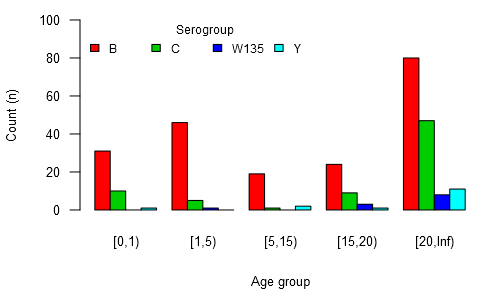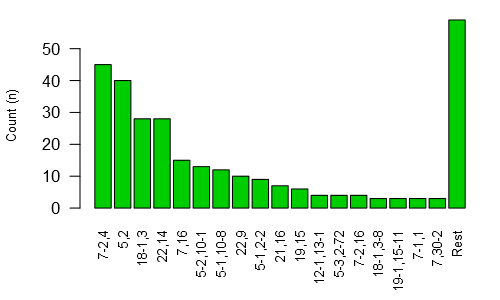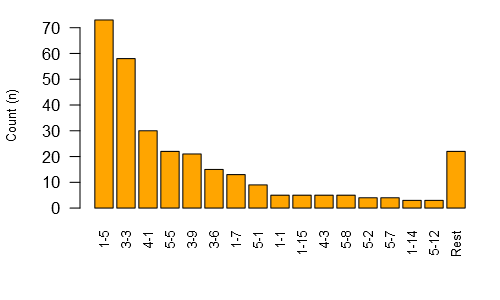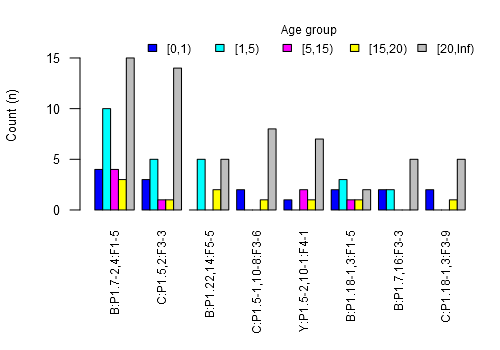Data 2012 (eng)
Data of the German Reference Centre for Meningococci, 2012
1) Introduction
The German Reference Centre for Meningococci (NRZM) is assigned by the RKI to perform laboratory surveillance of invasive meningococcal disease. In 2012 the NRZM received 422 samples from 385 individuals. Neisseria meningitidis was detected in 322 patients, in 308 of them from sterile compartments like blood and cerebrospinal fluid (this figure corresponds to the number of patients with invasive disease). In comparison, 355 cases of invasive meningococcal disease were notified in 2012 to the RKI as of 2013-01-22, cf. SurvStat@RKI. This figure reflects an almost unchanged incidence rate of meningococcal disease (0.43/100.000, cf. SurvStat@RKI) compared to 2011 (0.44/100.000). As the NRZM reports all processed cases (even retrospectively), a coverage of 87% of reported cases can be assumed (85% in the previous year). In 28 (out of 308) patients with invasive disease detection of meningococci was accomplished using non-cultural methods only.
The proportion of disease due to serogroup C increased slightly (24,1%), while that of B slightly receded (66.9%). The proportion of Y slightly decreased to 5,0%, while that of W135 slightly rose to 4,0%.
PorA and FetA continue to be used for "fine-typing" (cf. our reports from 2011, 2010, 2009, 2008, 2007, 2006, 2005 und 2004). In total 124 unique serogroup-PorA-FetA combinations (= "finetypes") were detected in 2012. The most common finetypes were B:P1.7-2,4:F1-5 (36, 12.8%), C:P1.5,2:F3-3 (24, 8.5%), B:P1.22,14:F5-5 (12, 4.3%), C:P1.5-1,10-8:F3-6 (11, 3.9%) and Y:P1.5-2,10-1:F4-1 (11, 3.9%).
2) Serogroup distribution according to federal states

7) Antibiotic susceptibility of invasive isolates (using breakpoints issued by EUCAST)
8) Geographic distributions
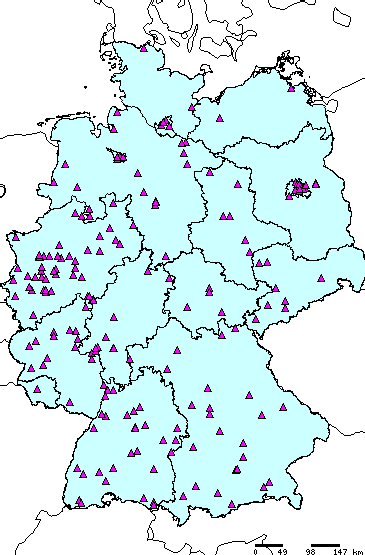
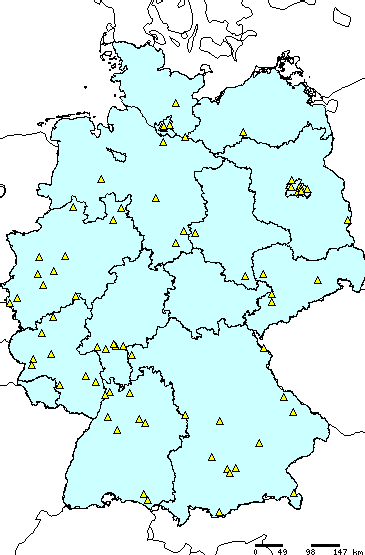
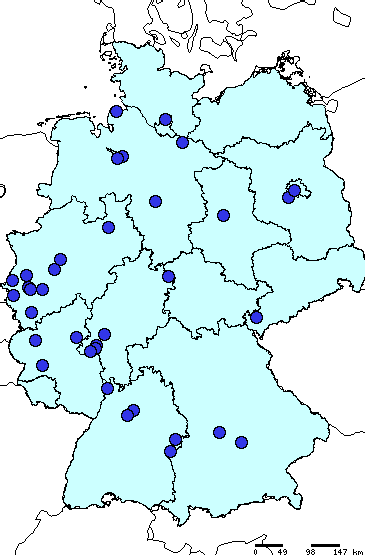
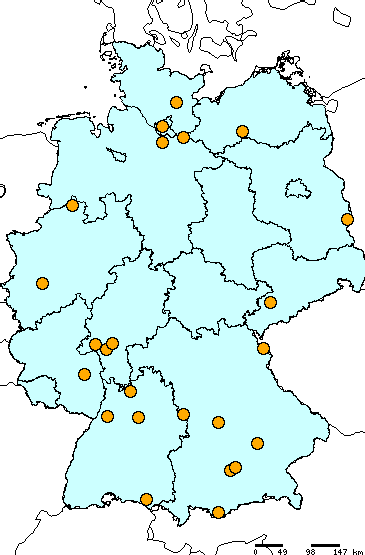
Comments: The geographic distribution of B and C is similar. Moderate clustering of B:P1.7-2,4:F1-5 in western North-Rhine-Westphalia continues to be present. Finetype C:P1.5,2:F3-3 displays a sporadic distribution. Maps were generated with EpiScanGIS.
9) Publications of the NRZM
Original papers:
This section is yet to be added.
Reviews and book chapters:
This section is yet to be added.
Disclaimer: the above data were generated with federal funds (RKI). Scientific use is prohibited without prior written consent by NRZM or RKI. Commercial use is strictly prohibited. Inclusion of figures or tables in talks or oral presentations is not allowed.
Version 0.2 © NRZM 2013

